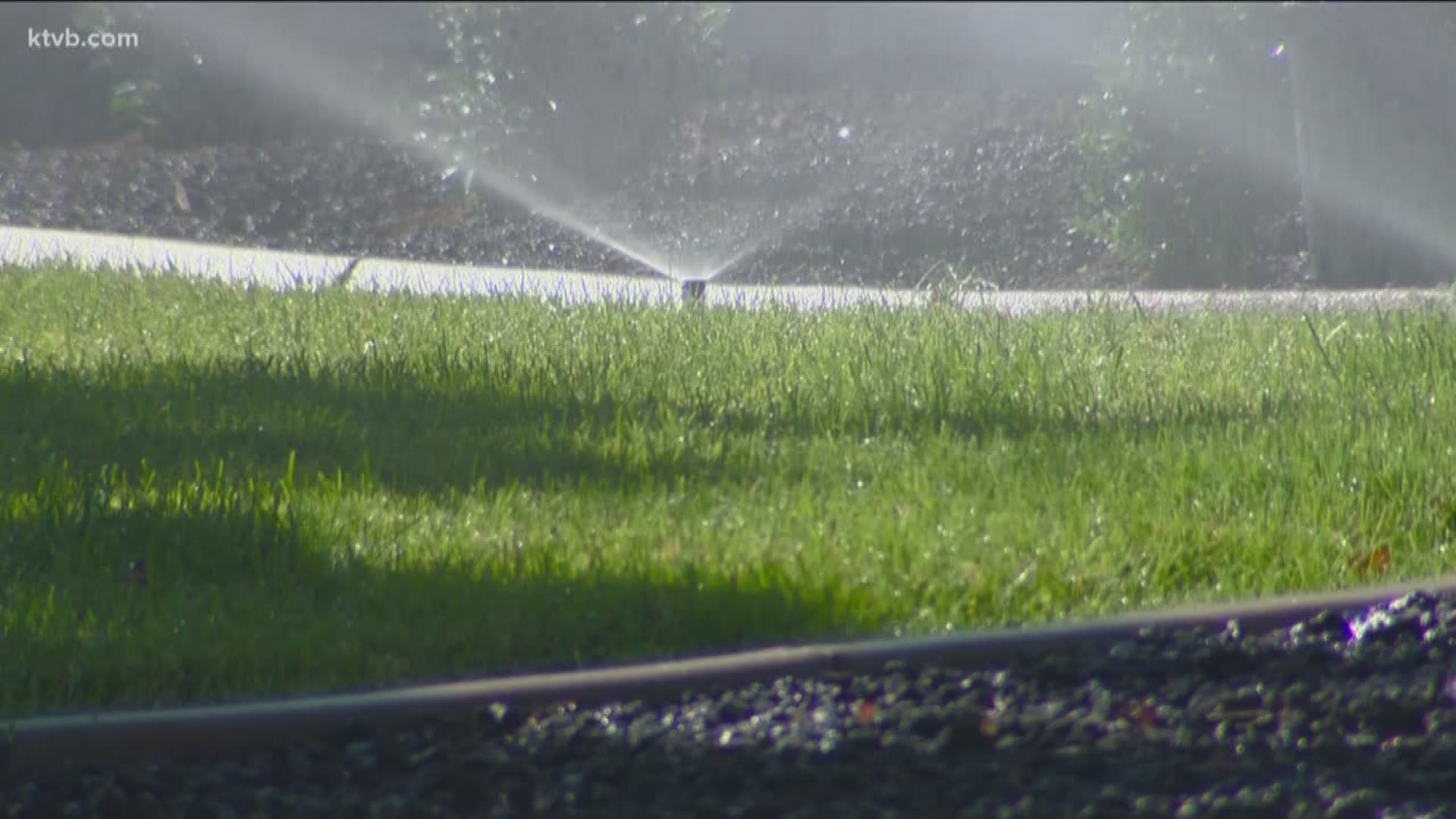Don’t you just love a lush, green lawn? The grass is greening up now, but how do you keep it that way?
Today on “You Can Grow It,” garden master Jim Duthie gets some basic tips from an expert on proper lawn care. And he also has some information about a garden festival and plant sale coming up this weekend that might be just what you need to get started on a successful growing season.
Spring is here, the grass is starting to green up, but there are some things you need to know about how to take care of your lawn to make it look its best.
Having a beautiful lawn really isn’t all that hard, according to Rich Guggenheim, an educator with the University of Idaho Extension Service. At a recent seminar held at Lakeview Park in Nampa, he said there are a few key things to remember -- don’t over-water and don’t over-fertilize.
“Proper irrigation management is probably the first and most important step to growing a healthy lawn,” said Guggenheim.
One of the biggest problems with residential lawns is over-watering.
“If they’re over-watering, they’re going to have a soft, squishy lawn that’s shallow-rooted.”
Too much water doesn’t allow the roots to develop and grow deep, which can actually lead to drought stress when watering is delayed, or during dry periods, and that leads to weeds and disease.
“When you’re watering the lawn, usually in the cool season you only need to be applying about a half inch of water per week.”
But too many of us water more than that at one time. Use cans or rain gauges around the lawn to measure the amount of water being applied during one watering cycle, and then adjust the timing as needed to prevent over-watering.
“So you start out with a half inch early in the season, and then you’re going to increase that as the season goes along, up to about an inch-and-a-half as the season progresses and heats up.”
Then there’s proper fertilizing. Rich says the best time to fertilize is actually in the fall, with a couple of applications, then a little in the spring.
“You want to fertilize in the fall to feed the roots.”
Stronger, deeper roots mean less watering, fewer weeds, and an earlier greening up of the lawn. And like watering more isn’t always better.
“No, no – that’s definitely not the case. More fertilizer is one of those things that can cause toxicity if you have too much nutrient in the soil.”
Lawn fertilizers contain a percentage of nitrogen, phosphorus and potassium. Nitrogen is for overall growth and green color. Phosphorus is for root development, and potassium promotes disease resistance.
Rich says our soil here typically contains adequate amounts of phosphorus and potassium. But lawn mowing and bagging up the clippings reduces the amount of nitrogen, so that’s mainly what we need to add. But not too much.
“In fact, over application of nitrogen fertilizer can cause certain diseases in the lawn to appear.”
An inexpensive soil test can help establish your soil texture and make up, and help you to determine best ways to fertilize and water your lawn.
And speaking of mowing, cutting the grass too short isn’t healthy for the lawn. Rich recommends keeping the mower set at a height of two-and-a-half to three inches, to discourage weed growth and maintain higher moisture levels.
Finally, recycle grass clippings back onto the lawn, instead of bagging them, for a natural way to fertilize and feed the lawn.
“Proper watering, proper fertilization, makes your lawn look good, and you don’t add unnecessary things to the environment. And by the way, this Saturday, we’ve got some special classes from the
Canyon County Master Gardeners on gardening and lawn care, and a plant sale.”
The U of I Extension Service and Canyon County Master Gardeners are hosting a spring garden festival on Saturday, with classes and workshops such as gardening 101, tree planting and maintenance, and many other topics.
And anyone can shop the plant sale for vegetable, flower and herb starts for the garden.
The Canyon County Master Gardeners Garden Festival and Plant Sale is Saturday from 9 a.m. to 4 p.m. at a couple of locations in Caldwell. They do encourage registration ahead of time for the classes, which cost $30. For more information, call the Canyon County Extension Office at 208-459-6003.

